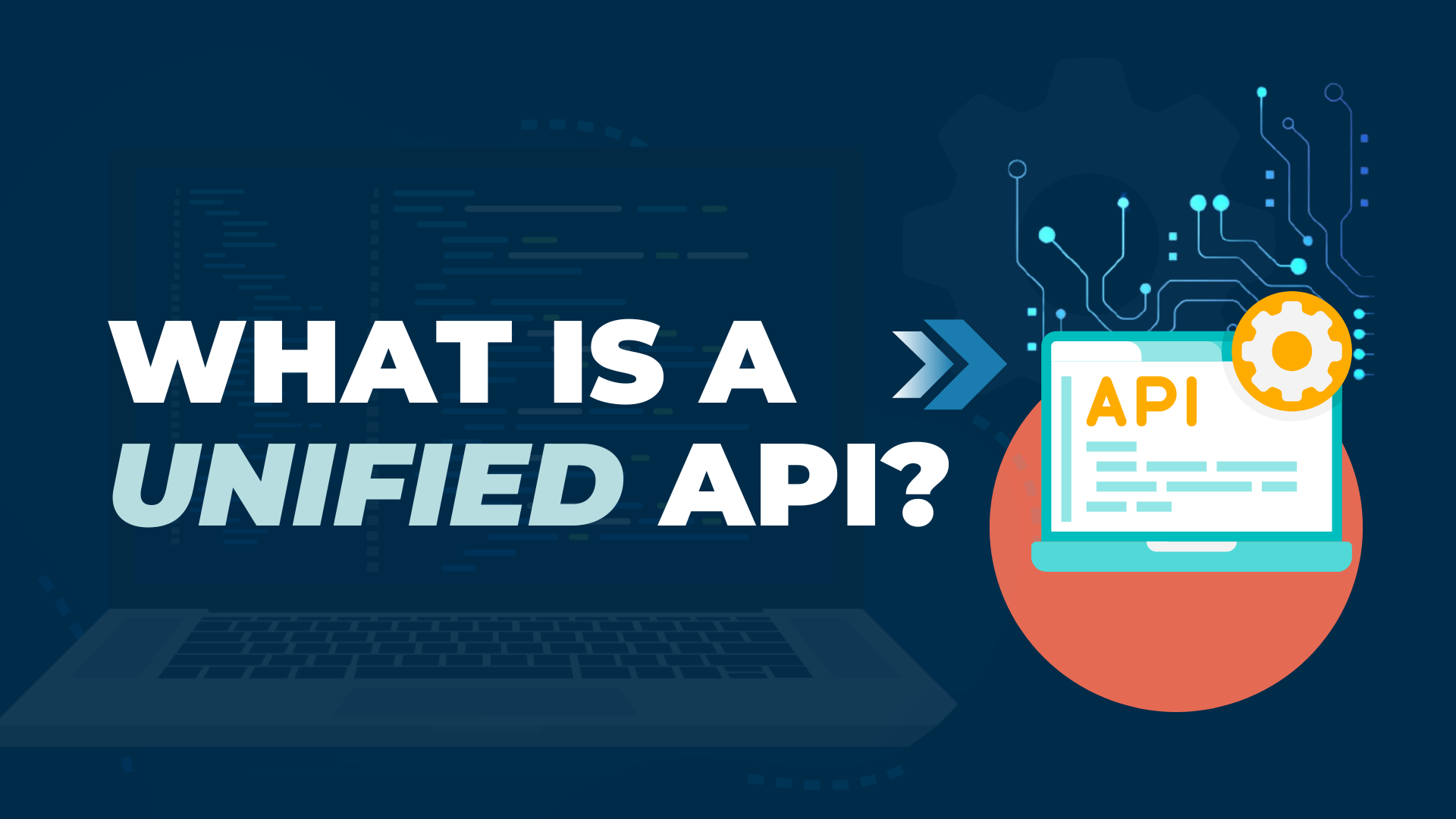A Unified API is a single interface that allows developers to integrate with multiple software applications using one standardized connection.
Instead of building custom integrations for each third-party system, a Unified API provides a universal language to connect and interact with multiple platforms.
Ask any developer who’s ever lost weeks wrangling brittle, one-off integrations, and you’ll hear the same answer: a Unified API is the smarter way forward.
Think of it as the Rosetta Stone for modern software—one interface that translates across dozens of platforms, turning a jungle of proprietary APIs into a single, standardized stream. No more juggling separate connections to Gusto, ADP, QuickBooks, or any other payroll companies. One build. One integration. Multiple connections—handled.
While the payroll world is a prime use case—where syncing pay runs, benefits deductions and 401(k) contributions typically means navigating a mess of vendor-specific chaos—the real magic of Unified APIs is their broader impact.
For startups and enterprise platforms alike, they offer a way to scale integrations without scaling complexity. Whether you're a platform looking to offer embedded payroll functionality, sync benefits and 401(k) data or automate employee onboarding, a Unified API simplifies everything.
In this guide, we’ll explore what a Unified API really is, how it powers modern payroll integration, and why it’s becoming the new baseline for scalable, compliant, and future-ready platforms.
Keep reading to learn:
- What is a Unified API?
- The role of a Unified API in payroll integration
- Key business benefits
- Comparison: Unified API vs Point-to-Point Integrations
- Real-world applications and industry use cases
What Is a Unified API?
You should think of Unified APIs as a "one-to-many" solution. Rather than building 10 different integrations with 10 different payroll systems, you integrate once with a Unified API—and gain access to all of them.
This simplifies the development process, reduces maintenance overhead, and accelerates time to market.
Key Features of a Unified API:
- Single integration point for multiple vendors
- Normalized data models across different platforms
- Consistent authentication and webhooks
- Built-in data mapping and transformation
Unified APIs are increasingly used in fintech, HR tech, martech and e-commerce platforms to accelerate product development.
Unified API Benefits
Using a Unified API, especially for payroll integrations, offers transformative benefits for businesses:
1. Faster Time to Market
Build one integration and connect to many payroll systems. This speeds up your go-to-market strategy.
2. Simplified Maintenance
Instead of juggling updates across multiple connections, you maintain a single API.
3. Scalability
Easily add support for new payroll providers without additional engineering resources.
4. Consistency & Standardization
Unified data formats make data handling and processing easier, reducing complexity.
5. Reduced Costs
Save on development and maintenance expenses by eliminating the need for custom integrations.
→ Want to dive deeper into the advantages of working with a Unified API? Check out our blog on the Benefits of Unified APIs
What Is a Unified API for Payroll: Connecting Payroll, Benefits & 401(k)
Today, payroll does more than cut checks—it powers employee benefits, insurance and retirement accounts.
A payroll API focuses on integrating payroll systems into your application or platform. Whether your business needs to retrieve employee data, initiate payroll runs or access pay stubs, a Unified API makes this process more straightforward and efficient.
Instead of connecting to each payroll provider separately—each with its own API structure, documentation, and quirks—you only have to integrate with one interface. From ADP to Gusto to Paychex, a Unified API for payroll streamlines connectivity across various providers.
Put simply, a Unified API for payroll ensures all of these systems speak the same language.
How Unified Payroll Integrations Work:
With a unified system, platforms can:
- Sync employee contributions to 401(k) providers
- Handle health insurance, vision, dental deductions
- Track FSA/HSA accounts in real-time
- Ensure compliant payroll taxes and withholdings
Why This Is Valuable:
✅ Real-Time Accuracy
When payroll data flows seamlessly into benefits and retirement platforms, employees get real-time visibility into their contributions, and HR can ensure accuracy without juggling spreadsheets.
✅ Automated Compliance
No more manual syncing of tax forms or benefit deductions. Unified payroll integrations keep your data aligned across systems—automatically.
✅ Enhanced Employee Experience
Employees want transparency. Seeing their payroll, benefits and retirement data in one place builds trust, improves retention and contributes to employee financial wellness.
✅ Seamless Bi-Directional Syncing
Changes in benefits enrollment or contribution rates instantly reflect in payroll, and vice versa.
✅ Scalable Infrastructure for HR Tech
If you're building or scaling an HR platform, having your payroll, benefits, and retirement and 401(k) working harmoniously through one integration means faster time to market and happier users.
For payroll, Unified APIs enable automatic syncing of:
- Employee contributions to 401(k) providers
- Deductions for health insurance, dental, vision and other benefits
- FSA/HSA tax advantaged accounts tracking and reporting
- Compliant tax and withholding data
With real-time updates and bidirectional data flows, companies can reduce manual entry, avoid mismatched data and ensure compliance with financial regulations.
Looking to simplify your payroll? > Explore our services
Unified API vs Point-to-Point Integrations:
When considering integration strategies, it’s important to understand the distinction between Unified APIs and Point-to-Point Integrations.
.png?width=1408&height=1056&name=Unified%20API%20vs%20Point-to-Point%20Integrations%20Comparison%20Chart%20(1).png)
With a Unified API approach, your team gains operational efficiency, flexibility, and the ability to scale your payroll integrations without adding strain on your resources.
Final Thoughts on Unified APIs
A Unified API for payroll not only simplifies integrations but also future-proofs your business by reducing complexity and accelerating your growth.
If you're a SaaS platform or HR tech provider looking to offer payroll functionality, a Unified API isn’t just an optimization—it’s a necessity. From seamless benefit syncs to automated 401(k) contributions and faster launches, Unified APIs let you move smarter and scale faster.
Contact us to start your integration journey with Payroll Integrations today.

